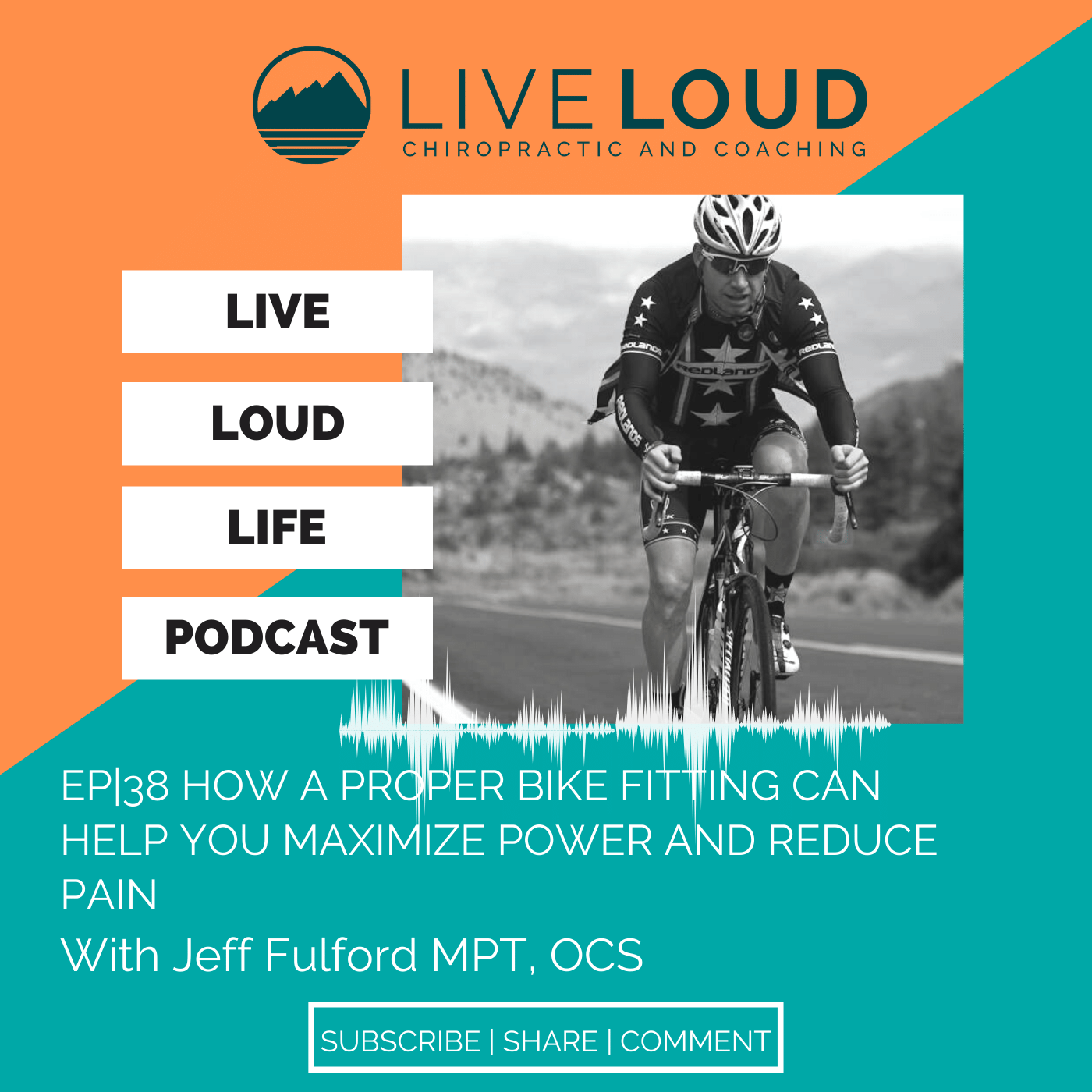Condition Series: How to Treat Lower Back Pain
It’s estimated that 70% of Americans will be suffering from some form of lower back pain at some point in their life. Now, if you have experienced low back pain before, you know what it’s like, and you’ve been there before, if you haven’t, I hope that it doesn’t happen for you, but this is going to be a short informational video about addressing some of the common lower back conditions that we see across the United States as well as in our office.
Hi, my name is Dr. Antonio Gurule. I’m a chiropractor here at Live Loud Chiropractic and Coaching. We are based out of Lafayette, Colorado, just outside of Boulder, Colorado, in Boulder County.
Today we’re going to dive in and show you what we do here at Live Loud Chiropractic and the philosophy and the approach that we take to lower back pain.
PLAY VIDEO ⬇︎
Our Approach
We focus on a movement methodology, a movement mentality. Meaning, movement first. If I can show you and prove to you, and help you gain confidence in the way that you move, especially if it’s painful movements that are exacerbating or triggering your pain, then you’re gonna have a lot more confidence going around your daily activities.
As an example, parents, if you are a new parent, or if you’ve ever been a parent, when you have a new baby, you are constantly bending forward, whether you’re sitting on the couch, or a loveseat, whether you’re bending over to pick up your baby leaning over a crib. And in order to change diapers, you oftentimes will experience some lower back pain or tightness.
So that’s our whole process. That’s our whole methodology, is helping you find those different nuances of movements that help reduce the triggers in the amount of pain that you’re experiencing. And then we’ll layer on top of that better ways to improve your mobility or your strength through a active rehab process.
And then on top of that, we’re gonna layer in obviously, the things that we’re good at, which is manual therapy, whether that’s soft tissue treatments, such as using our hands or our thumbs, whether that’s dry needling, cupping, Graston, scraping, and then on top of that, obviously being chiropractors is being able to perform adjustments to help maintain the mobility and the movements within the joints that we want.
Now, this is a group process, we have to be working at this together. Oftentimes we get individuals coming in expecting a chiropractor to fix them, when that’s the whole reason why they’re stuck in this feedback, this negative feedback loop and not being able to get out of it, because they’re expecting a quick fix–an adjustment or a muscle to be worked on in order for this to get better.
We have to remember that there is more to this outside of trauma or an accident, but even then there is a rehab process that needs to happen that got you into this in the first place. And movement, skill acquisition, strength, endurance, and mobility is going to be the way for you to get out of it, and stomp on that back pain once and for all.
Evaluation for Lower Back Pain
The most common back pain that we see, at least in our clinic, and that most people experience is what we refer to as flexion intolerant back pain, meaning your back does not tolerate flexing forward very well.
What does our movement assessment and evaluation look like? As well as the orthopedic assessment, And some of the common ways that we treat lower back pain, again, as a layer on top of the mobility, rehab, and movement that we already talked about.
- Bend down and attempt to touch toes. Does this create any symptoms? Does it cause any pain?
- Go down, touch your toes. and let the head drop as well. Does that increase any tension or pain anywhere?
- Go feet together again, arms straight up overhead both sides, and extend backwards as far as you can. Any pain or symptoms there? We also want to look for any dumping.
- Feet together. Look over your right shoulder, and then turn your whole body to the right. So twist shoulders and hips. We’re looking for good global range of motion within the hips, the spine, and the feet. Any symptoms there? Then look left, turn left.
- Sit down and grab either side of the chair. Keeping yourself nice and tall, pull yourself down into the chair. Any symptoms with that? This creates compression of the spine.
- Still seated, slump into your lower back. Grab this chair, and I want you to pull yourself down. For most that are having symptoms here, this would elicit more pain, again, helping us through the diagnostic criteria of determining what part of the spine in the tissue is most irritated or sensitive.
Non-Weight Bearing Evaluation
So oftentimes, commonly, what we see with lower back pain is we can get referral pains on the back of the leg or the hips.
- Straight leg raise.
This helps assess the neural tension of the sciatic nerve in the back of her leg. So I’m going to have you just relax this leg on my shoulder here. First and foremost, we want to see if this elicits any pain or creates any symptoms. From here, I’m going to simply ask her to tell me when she feels the first sign of tension in her hamstring.
- Now I’m going to pull the toes up.
Does that change the tension? More intense? And does it go anywhere else down the calf down the feet, or anything like that?
- Heel drop test. Stand tall and just plop down. With my leg straights, I’m basically trying to send an impulse or an impact up through my spine.
- Testing for Facettes Syndrome. Give yourself a big hug. And essentially, I’m going to kind of move her around to determine if there’s any sticky spots or spots that create pain for her in that lower back area, or the facettes.
Movements to Reduce Lower Back Pain
Decompression. All you need is a banister, a rail, a doorknob, or a sink in which you can hold on to.
- The Supported Squat
We’re gonna face each other with a nice open stance, like we’re gonna be doing squats, and hold hands. So by her hanging on, if you notice from that profile view, her butt is essentially moving her hips in the opposite direction of her hands. If I was to draw a straight line down from her hands to her hips, we see a relatively straight profile here. what’s in the middle? Lower back. So hips go one way, hands go the other. That offers a little bit of decompression or traction in the lower back.
- Hinging Pattern
Hips go back, spine stays nice and long.
Widen Your Stance. Spread the feet apart a little bit more, and then toe out. Do the same hip hinge, but your stance is now wider. This actually gives her a little bit more range of motion, allowing her to go down to the ground more.
- Extension-based Movements
Use your hips to shift your hips back and forth.
If you’re able to just bend that those joints back and forth nice and easily, it creates this pump, which allows the joints and everything to kind of get re lubricated and loosened up without eliciting pain.
- Modified Upward Dog
This is going to be very similar to the classic Upward Facing Dog movement. The only difference is we’re not actively trying to lift ourselves and create extension, we’re going to try to do this in a more passive manner.
Get on your hands and knees, and walk your hands forward just a little bit. Shift your weight more into her hands and let your hips drop to the floor. This creates a nice bit of extension in our lower back, and then we’re going to come back up. Perfect, and we’re gonna go back and forth. The sweet spot for these reps seems to be about 20. When you do about 20 of these, everything seems to loosen up really nicely.
Manual Therapy Care for Lower Back Pain
So we’re going to briefly walk you through palpation and care, manual therapy care for lower back pain. Alright, so after we’ve done the movement assessment, we’re trying to determine what movements feel good based on the pain you’re experiencing.
Major focus is the movement in the mid-back and the hip.
How do we work on this? Well, we work on soft tissue as we normally would, working digging into trigger points. we would go through the adjustments that you would obviously expect from seeing a chiropractor.
And especially when we’re talking about the hip, we want to make sure that we’re seeing good hip range of motion. There’s a number of stretches that we can work on and give. And there’s obviously certain areas within the soft tissue around the hip complex in the lower back, that can help unlock the hip joint as well.
Chiropractic Adjustments for Low Back Pain
So we’re just going to do one lower back adjustment here. Now, a lot of times people are concerned, is this going to be aggressive? Is this going to hurt? it really just depends on obviously, the provider you’ve seen, obviously, growing up with my wife, Nichelle, and learning how to adjust gentle from an early age. That’s our whole focus. if adjustments aren’t for you, obviously, we’ve described a number of different tools that will still help you. That’s why we do not focus solely on adjustments, because it’s not for everybody.
Conclusion
Here’s the plan. Figure out the movements that are painful, figure out the things that are painful, figure out the joint dysfunctions and the areas that are not performing as we would like to see and set up a plan on how to gain mobility, gain more strength, and gain more confidence so that you can systematically scale those and progressively load that to get stronger and stronger and more mobile.
That’s how you beat lower back pain and really create a better long term plan for that. Please do not hesitate to reach out to us with any questions. Again, our goal is to guide and support you to that adventurous life that you are made for, and we want to be an advocate through being that coach and leader, as a provider for you.




